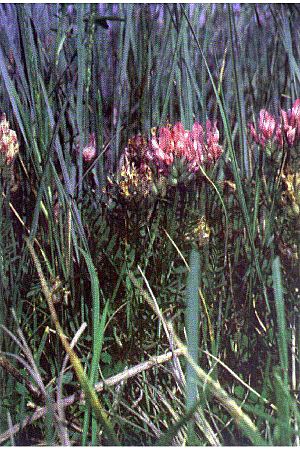Purple milkvetch facts for kids
Quick facts for kids Purple milkvetch |
|
|---|---|
 |
|
| Scientific classification | |
| Genus: |
Astragalus
|
| Species: |
agrestis
|
| Synonyms | |
|
Astragalus dasyglottis |
|
Purple Milkvetch (Astragalus agrestis) is a type of plant called a milkvetch. People also call it purple loco or field milkvetch. This plant grows naturally in many parts of western and northern North America, including most of Canada and the southwestern United States. You can also find it in eastern Asia. It likes to grow in wet places like meadows, especially where the ground gets wet in spring. It often appears near sagebrush plants.
Contents
What it Looks Like
This plant is a perennial herb. This means it lives for more than two years. It grows a thin but strong stem from a thick, underground stem called a caudex. The plant can lean over or grow straight up. It usually reaches about 30 centimeters (about 12 inches) tall. Its stem often feels a bit rough because it has hairs.
The leaves grow one after another along the stem. Each leaf can be up to 10 centimeters long. They are made up of several smaller leaf parts called leaflets. Each leaflet is about 2 centimeters long. These leaflets are shaped like ovals or narrow spears. Sometimes, their tips have a small notch.
The Flowers
The flowers grow in a cluster that looks like an oval. This cluster is called an inflorescence. There can be up to 15 flowers in one cluster. The flowers are usually purple, but they can also be pinkish or almost white. They look a bit like pea flowers. Each flower is about 2 centimeters long.
The Fruit
After the flowers bloom, the plant produces fruit. The fruit is a pod shaped like an oval. It can be up to 1 centimeter long. These pods are dark in color and covered with white hairs. When they dry out, they become thin and feel like paper.
See also
 In Spanish: Astragalus agrestis para niños
In Spanish: Astragalus agrestis para niños

